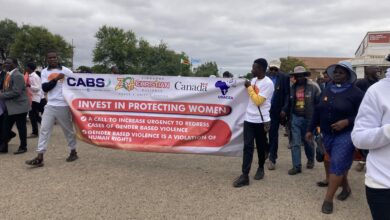
There is a drop in the number of people observing the Covid-19 preventative health measures across the country, which may be a sign that citizens are growing tired of the pandemic and the restrictions, a third edition of the High-Frequency Telephone Survey of Households to measures socio-economic impacts of Covid-19 in Zimbabwe has found.
The World Health Organisation (WHO) defines pandemic fatigue as “demotivation to follow recommended protective behaviours, emerging gradually over time and affected by a number of emotions, experiences and perceptions”.
According to the Rapid Poverty, Income, Consumption and Expenditure Surveys (PICES) Monitoring Telephone Survey, jointly funded by the Zimbabwe Reconstruction Fund (ZIMREF) and United Nations Children’s Fund (UNICEF), implemented by Zimbabwe Statistics Agency (ZIMSTAT) with technical support from the World Bank and UNICEF, a proportion of people observing preventive health behaviours continued to fall from last year July to March this year.

58 percent of people avoided social gatherings, down from 91 percent in July 2020 while a drop was also reported in wearing face masks and washing hands.
This third round of Rapid PICES survey was conducted from December 15, 2020, to March 10, 2021, and is compared to findings of the first round conducted from July 6 to 24, 2020 while the second round was conducted from August 24 to September 23 of 2020.
1 235 households were sampled in round three, compared to 1 747 households in the first round and 1 639 households in round two from all ten provinces of Zimbabwe.
“To stop the spread of Covid-19, people must adopt preventive health measures. Results from the third round survey reveal that the proportion of people that avoided social gatherings (58 percent) continued to drop since July 2020, when it stood at 91 percent,” read the survey.
“The second round survey had already shown a significant drop to 67 percent. This decline was seen in both urban and rural areas.”
According to the Rapid PICES study, the proportion of respondents wearing a mask in public in the third round survey also declined after remaining largely unchanged over the first two surveys conducted between July and September 2020, with about 88 percent wearing them in urban areas and 75 percent in rural areas.
“The proportion of people that washed their hands after being in public followed a similar trend, constituting 85 percent in urban areas and 75 percent in rural areas,” read the survey.
The Covid-19 pandemic created an urgent need for timely information to help monitor and mitigate the socio-economic impacts of the crisis.
This information is essential to inform policy measures for protecting the welfare of Zimbabweans and responding to this need ZIMSTAT, together with the World Bank and UNICEF, designed a high-frequency telephone survey of households to measure the socio-economic impacts of Covid-19 in Zimbabwe.
The high frequency telephone survey is based on PICES of 2017 and 2019.
Commenting on the Rapid PICES study, Communications and Advocacy Officer at the Centre for Health Communication Zimbabwe (CHCZ), Andile Tshuma, confirmed that people were ‘indeed’ fatigued by adhering to Covid-19 protocols, which was an obstacle.
“We are having a challenge of Covid-19 fatigue. People are tired and exhausted from months of lockdowns and Covid-19 etiquette,” she told CITE in an interview.
Tshuma, however, encouraged citizens to continue abiding by preventative measures in order to protect themselves and stop the further spread of the pandemic.
“Zimbabweans are reminded that as we are in the third wave of the Covid-19 pandemic and with one of the deadliest strains as yet, it is now more than ever, very important to follow all Covid-19 protocols to protect oneself and others,” said the advocacy officer.
“We are not out of the woods yet, so it will take all of us acting responsibly to help slow the tide.”





